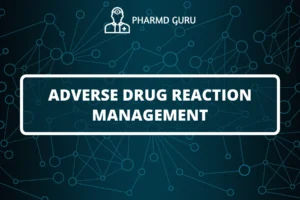Quality assurance is a vital component of clinical pharmacy services, ensuring that patients receive safe, effective, and high-quality care. In this article, we will explore the importance of quality assurance in clinical pharmacy, its key elements, and the role of clinical pharmacists in maintaining and enhancing the quality of pharmacy services.
SCROLL DOWN TO THE BOTTOM OF THE PAGE FOR ACTUAL NOTES
TABLE OF CONTENTS:
- Introduction
- The Importance of Quality Assurance in Clinical Pharmacy
- Key Elements of Quality Assurance in Clinical Pharmacy Services
- Role of Clinical Pharmacists in Quality Assurance
- Implementing Quality Assurance Programs
- Continuous Quality Improvement
- Collaboration and Communication
1. Introduction
Quality assurance in clinical pharmacy services focuses on ensuring that patient care is delivered consistently, meeting established standards of safety, effectiveness, and professionalism. It involves systematic monitoring, evaluation, and improvement of pharmacy practices to enhance patient outcomes and satisfaction.
2. The Importance of Quality Assurance in Clinical Pharmacy
Quality assurance is essential for several reasons:
- Patient safety: Quality assurance measures help identify and mitigate potential risks, errors, and adverse events in medication use, ensuring patient safety.
- Treatment effectiveness: By monitoring patient outcomes and optimizing medication therapy, quality assurance enhances the effectiveness of clinical pharmacy services.
- Professional accountability: Quality assurance programs promote accountability among clinical pharmacists and the pharmacy team, ensuring adherence to professional standards and ethical guidelines.
- Continuous improvement: Through quality assurance, clinical pharmacy services can identify areas for improvement and implement strategies to enhance patient care continuously.
3. Key Elements of Quality Assurance in Clinical Pharmacy Services
Quality assurance in clinical pharmacy services comprises several key elements:
- Standardized protocols and procedures: Establishing clear and standardized protocols and procedures ensures consistency in the delivery of pharmacy services.
- Documentation and record keeping: Accurate documentation and record keeping enable traceability, accountability, and the ability to assess the quality of services provided.
- Medication safety practices: Implementing robust medication safety practices, such as medication reconciliation, error reporting, and adverse drug reaction monitoring, minimizes the risk of medication-related incidents.
- Continuous professional development: Clinical pharmacists engage in ongoing professional development activities to stay updated with the latest evidence-based practices and enhance their knowledge and skills.
- Patient feedback and satisfaction assessment: Seeking patient feedback and conducting satisfaction assessments provide insights into the quality of clinical pharmacy services and guide improvements.
4. Role of Clinical Pharmacists in Quality Assurance
Clinical pharmacists play a pivotal role in quality assurance of clinical pharmacy services:
- Adhering to professional standards: Clinical pharmacists follow professional standards, guidelines, and ethical principles to ensure the provision of high-quality pharmacy services.
- Monitoring and evaluating medication therapy: Clinical pharmacists assess the appropriateness, safety, and effectiveness of medication therapy through medication reviews, drug utilization evaluations, and patient consultations.
- Identifying areas for improvement: Clinical pharmacists actively participate in quality assurance programs, identifying areas for improvement in pharmacy practices, patient care processes, and medication-related outcomes.
- Implementing quality improvement initiatives: Based on their evaluations, clinical pharmacists develop and implement quality improvement initiatives, such as developing guidelines, conducting staff training, or revising procedures to enhance the quality of pharmacy services.
5. Implementing Quality Assurance Programs
To effectively implement quality assurance programs, clinical pharmacy services can follow these steps:
- Establish quality indicators: Define measurable quality indicators that reflect the desired outcomes and standards of care.
- Develop monitoring and evaluation processes: Create systems for ongoing monitoring and evaluation of pharmacy practices, patient outcomes, and adherence to established standards.
- Conduct regular audits and assessments: Perform regular audits and assessments to identify areas for improvement and ensure compliance with quality standards.
- Provide feedback and recommendations: Share audit findings, feedback, and recommendations with the pharmacy team to promote awareness and drive improvement efforts.
- Implement interventions and measure outcomes: Develop and implement interventions based on identified areas for improvement, and monitor the outcomes of these interventions to assess their effectiveness.
6. Continuous Quality Improvement
Quality assurance is an ongoing process that requires continuous quality improvement efforts. Clinical pharmacy services should foster a culture of continuous learning and improvement, encouraging the implementation of best practices and the adoption of new technologies and advancements in the field. Regular evaluations, feedback loops, and data-driven decision-making are key to achieving continuous quality improvement.
7. Collaboration and Communication
Collaboration and communication are crucial for effective quality assurance in clinical pharmacy services. Clinical pharmacists should actively collaborate with other healthcare professionals, including physicians, nurses, and administrators, to promote interdisciplinary teamwork and ensure seamless coordination of patient care. Clear communication channels facilitate the exchange of information, promote shared decision-making, and enhance the quality of pharmacy services.
ACTUAL NOTES




